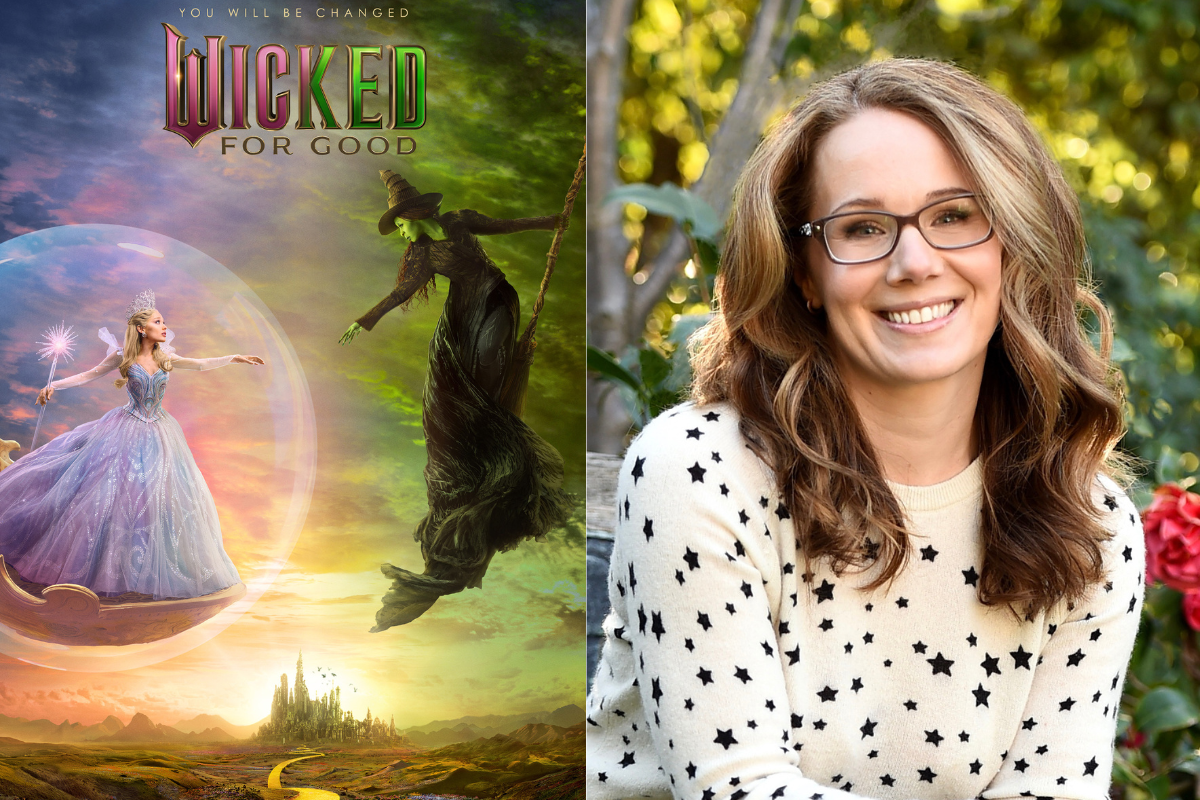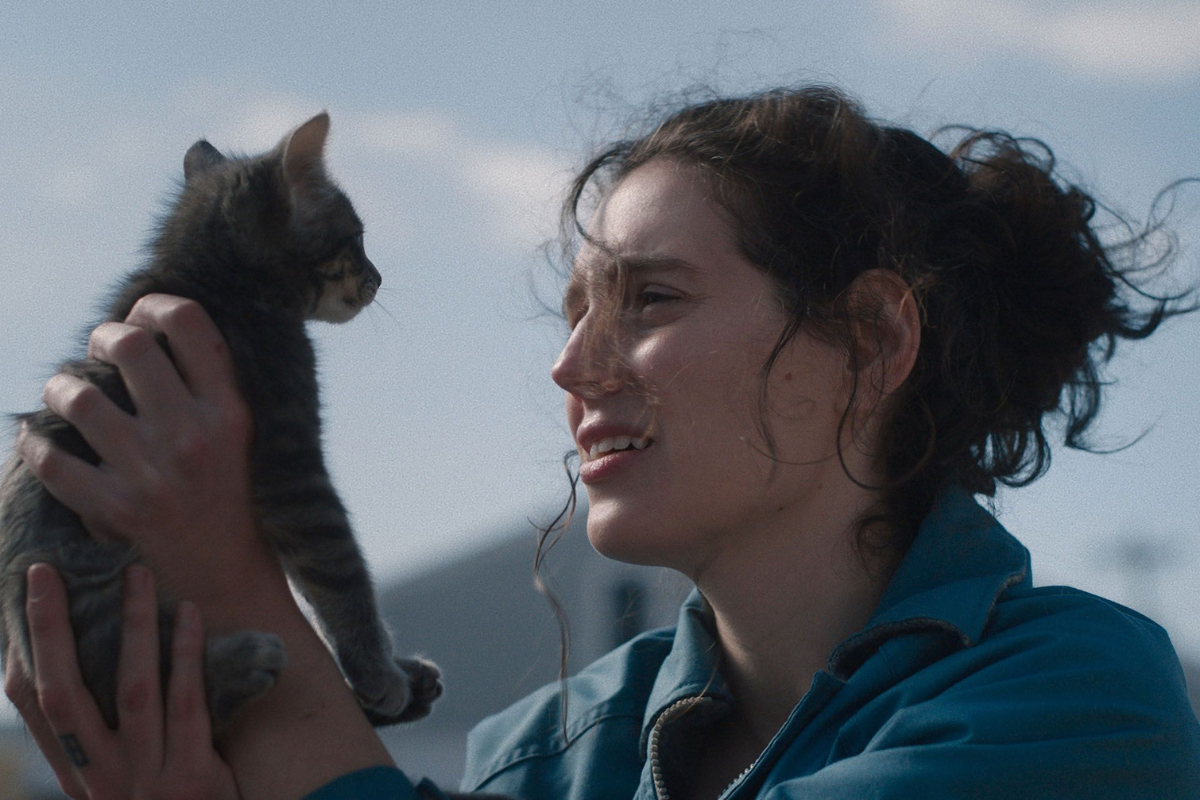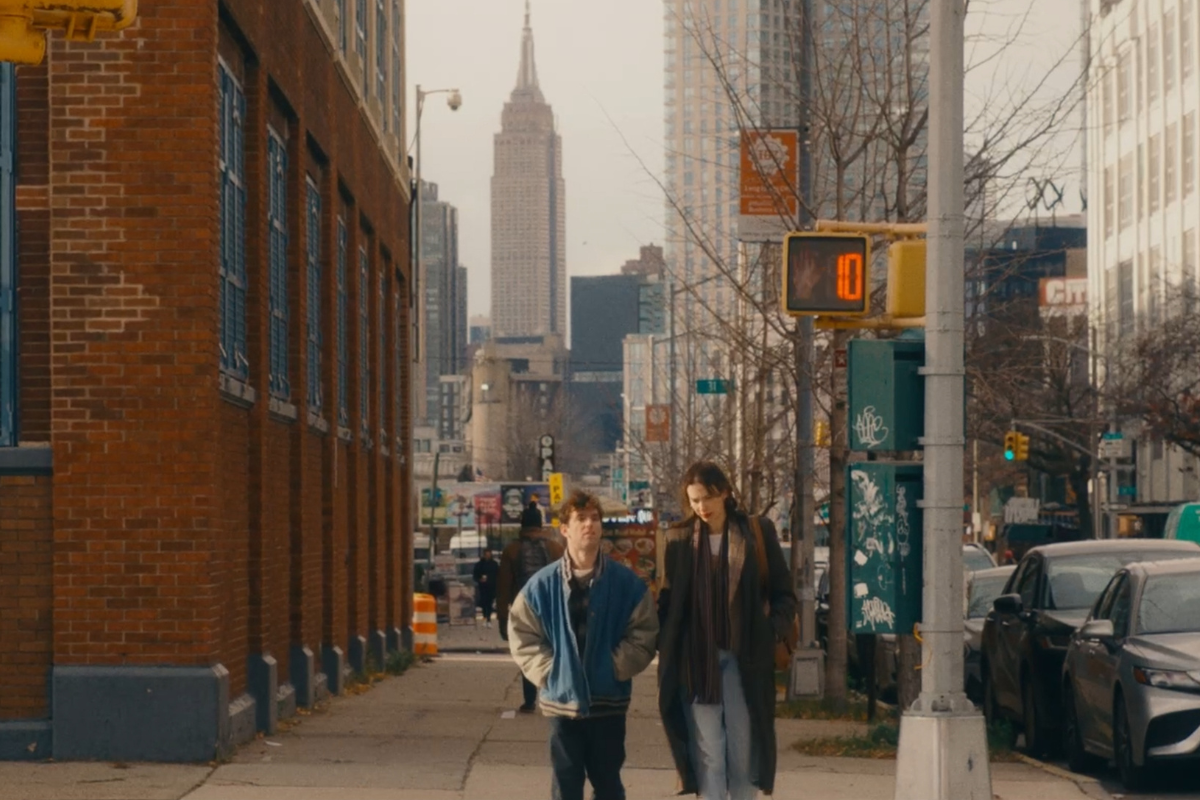Capturing Creative Isolation with ‘Under the Volcano’ Filmmakers Gracie Otto and Cody Greenwood
Writer/director Gracie Otto and writer/producer Cody Greenwood, the filmmaking team behind the ambitious documentary ‘Under the Volcano’ share insight behind their creative collaboration, the personal connection to the island Montserrat, and why the edit is so important in documentary storytelling.
Under the Volcano charts the rise and fall of AIR Studios Montserrat, the recording studio at the centre of the pop universe in the 1980s. Built by Beatles’ producer Sir George Martin in 1979, AIR Studios Montserrat was a custom-built, state-of-the-art recording facility tucked away on a Caribbean paradise. In the shadow of an active volcano, the studio not only attracted the biggest musical talent on the planet, but was the birthplace of mega-hits such as Money for Nothing and Every Breath You Take. For a decade, AIR Montserrat formed the backdrop to monumental events in music history including the break-up of The Police, the reunion of The Rolling Stones, and the reinvigoration of Paul McCartney after the tragic murder of John Lennon. After a decade of hits, and at the peak of its popularity, the studio was destroyed when the island was hit by a series of devastating natural disasters. Through personal accounts and backed by a blistering soundtrack, Under the Volcano is the definitive account of George Martin’s Studio at the end of the world, a place that generated a perfect storm of talent, technology and isolation, ushering in music that would live on long after the last tape rolled.
I had the opportunity to speak with writer/director Gracie Otto and writer/producer Cody Greenwood, the filmmaking team behind the ambitious documentary Under the Volcano. We talk about their collaboration, the personal connection to the island Montserrat, and why the edit is so important in documentary storytelling.
This interview has been edited for content and clarity.
Sadie Dean: Where did the essence for this story and documentary stem from?
Cody Greenwood: I visited Montserrat all the time as a child. My mom was a painter there in the 70s and she met Sir George Martin on the island, and she would sell her artwork to the musicians who came down to Montserrat. I had always known about the studio, and I started my company Rush Films, and then thought would be a great idea to make a film about it. But it was quite a long road. There are people that have tried to tell this story before, but I was really fortunate that Sir George Martin's family trusted me to be able to tell it, and then I brought on board Gracie about a year and a half, two years into the process.
Sadie: Gracie, what was the thing that made you go, “Yes, I have to tell the story.”
Gracie Otto: I'd done one documentary about a theater empresario that was set in the 60s to 80s. And it had a lot of celebrity interviews as well, but it had more to do with theatre and music and dance. So, in a way that kind of format had excited me. I like telling stories when it can get numerous interviews to kind of get that 360 on it. And I knew the music, but I knew nothing about the island, like Cody did. She came with this 70-page research document, everyone who had recorded down there and every band and artist that had been there, which was quite overwhelming of the amount of music that came out of this tiny place. I kind of felt like I saw a lot of myself in Cody when I set out to do my first big feature. Aiming at the top to get all these people and tell this incredible story that really felt like it had a really strong beginning, middle and end. And it was more about what are we going to not talk about in the film, because there's so much.
Sadie: With documentary filmmaking, you have an idea of what you want to do with the story and where you’re going to go with it. But there's also this beautiful thing that happens with documentaries, when you're in an interview, it totally could change your perspective on the story. Did you either have you ever come upon an instance when doing an interview or you're on the island, of capturing the unexpected?
Gracie: There were a lot of rumors about stories, or the genesis of how some songs came about that we'd heard about. It was always exciting when we interviewed people and would ask them those kinds of questions, they could back up the story and say, “Yeah, that's true. That's how that song came about.”
Cody: I think we'd so heavily researched, I don't think it was information necessarily, but it was the little moments of humor, like with Verdine White from Earth, Wind and Fire where he talks about he's from Chicago and he doesn't do volcanoes. Or it was really those moments for us, which just really are like those moments of gold, which I really loved during the interview process, but also the people of Montserrat for me, I always knew that had to be the heart of the film, having been at Montserrat a lot of my childhood. And it was like that first day that we sat down and interviewed the bartender and the maintenance guy together and it was at that point that I was like, “Oh, yes, this is where the film is meant to land.” And when Gracie first met the people of Montserrat, it really felt like we sort of found that magic that I knew we were going to have in the documentary.
Sadie: Did you have an idea of who you were going to interview on the island, from your previous relationships?
Cody: Yeah, in some of the research that I've come across, I knew that was sort of the core team who worked at the studio. And Danny who taught Sting how to when surf was a family friend. There were people on the island that we'd ask, “Well, where do they live?” and they’d be like, “Just go down that street turn left, we can't tell you their address.” But you know, it's such a tiny island. Everyone we spoke to was like, you got to find this chef. And somebody ended up giving us a home phone number and we would call all the time, every couple of days, just to see if anybody would pick up. And then one day, we were sitting around, we'd been in for a couple of weeks of trying to get Stevie Wonder and I was just said, “I'm going to call that number” and he picked up and we're like, “Oh my God!” [laughs] and ended up flying him to LA to spend four days with us, we just had such a lovely time with him.
Sadie: I'm curious about your collaboration process, knowing that you're both the writers, and again, documentary filmmaking, it’s a whole other beast outside of narrative filmmaking. What was that process like between the two of you from Cody bringing in a treatment and then being on set, conducting interviews, and then post-production as well?
Gracie: I think we've really worked so well together, because we're very similar in many ways. And then we've got our differences as well, and our strengths that I think really fit well together as a puzzle - we obviously spent a lot of time together. And even doing interviews, I would do the interviews, and then Cody would sit in on the interviews and at the end, I'd be like, “anything else?” and that was really helpful to have things that I've forgotten or bits that we knew were going to be tough questions that then didn't look like necessarily that were coming straight from me. So, we could be good cop, bad cop and kind of play that a lot. We're both incredibly fast and determined. Which was a big test with the patience of getting those celebrities. Sometimes we had a lot of sitting around and waiting for people to get back to us. But yeah, it felt like we we're on Amazing Race. We obviously had our strengths in producing and directing, but then could kind of come together through the writing process with our editor, Karen Johnson, and work more thoroughly on these stories as well. There are so many aspects, and it's such a collaborative process.
Sadie: How many shoot days did you have for production? And then for post?
Cody: It's a really good question. I know that the edit sort of went up to around 30 weeks, which is in Australia, that's a really long edit - overseas, not as much - but in Australia, they are trying to really cut down the editor's time. It was a 30-week edit in terms of shoot days, I reckon, maybe around 30 or 40, what do you think Gracie?
Gracie: We interviewed around 35 people. We normally try to do two or three a day - depends on the city. And then we were down on the island for eight or nine days. And then in December and January - going back to London [to interview] Mark Knopfler and then going back and [interviewing] Nick Rhodes. It was always all over the place. There’s always so much to do with a documentary because there's so much research and so many clips and other things you can watch. Trusting the process, you can't make the film in one week and you get to a certain point where there's nothing else we can do here and then you find another way to edit something and go 'Oh, now it's totally working.' Because for us, it was like trying to work out what the storylines were and what the big bands were that we want to tell as well as having time for Sir George Martin and the volcano and hurricane and the studio.
Sadie: Why in Australia do they want to cut editors' time down? It’s so important!
Cody: It's just a different way of doing things. I think the edit is by far where you should be sticking the most time and there's a lot of people being like, “When are you guys gonna finish this film?” [laughs] I'm glad we had a long edit because we were still filming in March when COVID happened and then we didn't have any other projects to go to, so we were just like, “Well, let's just keep cutting and getting it to a really good place.”
Sadie: Was that a silver lining for the two of you to just really dig in deeper into that cut of the story?
Cody: Yeah, I think that we all became so immersed in this concept of creating in isolation and by the time we finished, we felt like what we created was a homage to creativity and isolation, we'd all experienced it. We felt like we knew what it felt like to be on Montserrat collaborating. I think it was a really good thing for all of us as a team in the end. And it actually really kept a lot of us going, because we knew that every day we would have this project to work on. It's a positive film. It's a fun film. It definitely kept me going during those months when we were in lockdown.
Sadie: From a storytelling standpoint of picking your theme or who you're going to talk to, you didn't make it just about Sir George Martin, or just about the island, you made it a culmination of everything. How did you make that the choice to do that?
Cody: I think it was a tricky choice because there was a lot there. There was a history of the island, there's a history of the studio, there were the people that went down there, and there was Sir George Martin. And for us, we really wanted Sir George Martin to be kind of like a spirit in the film, somebody who was there, but not there and you sort of felt his presence. But at the end of the day, he didn't really impose on the bands time down there unless he was producing, which he did for a few of the bands. But otherwise, he stood back and really let artists tell their story. We also knew that we didn't want to tell a story that was back to back - here are all the albums that were recorded there - we wanted people to be able to connect with the musicians themselves and with the bands and with their stories. Because I think for us, like a female filmmaking team where we didn't come from this fanboy aspect, we were really fascinated with the human side of recording. But it was definitely tricky. There were times in the edit where we just couldn't get that balance right, you give more time to George and the island would fall away, it was actually quite a delicate balance to get right. But Karen, our editor is just incredible. And we worked really closely with her to try to get there.
Sadie: Did you have any hurdles in finding any of those previous recordings or videotapes? Or was that easily accessible for you two?
Gracie: It was ambitious to set out and do a music documentary about that many big bands and hit songs. We keep on joking, we should have just done a documentary on The Police. We had all the band members down there, we had all the home video footage, all the archives.
Cody: We had a really wonderful archive producer Lisa Savage, who we worked really closely with and she would be gathering archives for us for the film, while Gracie and I would be doing interviews, and people would be saying to us, “I've got all this incredible footage.” It was constantly that back and forth and stalking people and going to crazy lengths, but I think we definitely uncovered some gold. We're so sure that somebody had a camera down there during the Elton John period, and we've had people looking in their parent's garage for tapes, [laughs] and you go so deep for archive when you're making one of these films, but I think we uncovered some pretty cool stuff.
Sadie: You absolutely did! For filmmakers who have an interest in making their first documentary film, what is something that you wish someone would have told you on your first documentary either from locations to interviews or all the above?
Gracie: The way I always like to tackle things is to do a treatment for the film and then go OK if we're telling that story, who do we need to interview? What pictures and archives do we need? What music do we need? Then you write a list of what we need and start collecting. There's so much collecting to do with a documentary. I wish someone had said to me trust the process that you'll get there in the end. I like to think that it's like swimming out to sea and you get to a point where you're about halfway, and you go it's actually just as hard to go back and not finish it as it is to keep going.
Cody: I think it's just so important when you start out, it can be really overwhelming, to look at the bigger picture. And sometimes it's easier just to focus on one step at a time. Like for this film, who do I first talk to about my idea to get permission to tell the story and then taking it step by step and bringing on people like a music supervisor who can tell you how music rights work, but it's important, I think, not to get overwhelmed. And then when you get to a point where you want to start making it, I think it is so important to select your team really carefully because you're going to be with them on a journey for a really long time. And I think that's easy to forget in the early days, you get very excited, but if you pick your team well, it will just make the whole experience so much better.
Sadie: I think that's great advice from both of you. The two of you are a solid team and I hope you two keep pushing forward and making films together.
Under the Volcano is available On Demand and Digital on August 17, 2021.
Learn more about the craft of Documentary Film Writing from our Script University course!
Sadie Dean is the Editor of Script Magazine and writes the screenwriting column, Take Two, for Writer’s Digest print magazine. She is also the co-host of the Reckless Creatives podcast. Sadie is a writer and filmmaker based in Los Angeles, and received her Master of Fine Arts in Screenwriting from The American Film Institute. She has been serving the screenwriting community for nearly a decade by providing resources, contests, consulting, events, and education for writers across the globe. Sadie is an accomplished writer herself, in which she has been optioned, written on spec, and has had her work produced. Additionally, she was a 2nd rounder in the Sundance Screenwriting Lab and has been nominated for The Humanitas Prize for a TV spec with her writing partner. Sadie has also served as a Script Supervisor on projects for WB, TBS and AwesomenessTV, as well as many independent productions. She has also produced music videos, short films and a feature documentary. Sadie is also a proud member of Women in Film.
Follow Sadie and her musings on Twitter @SadieKDean







